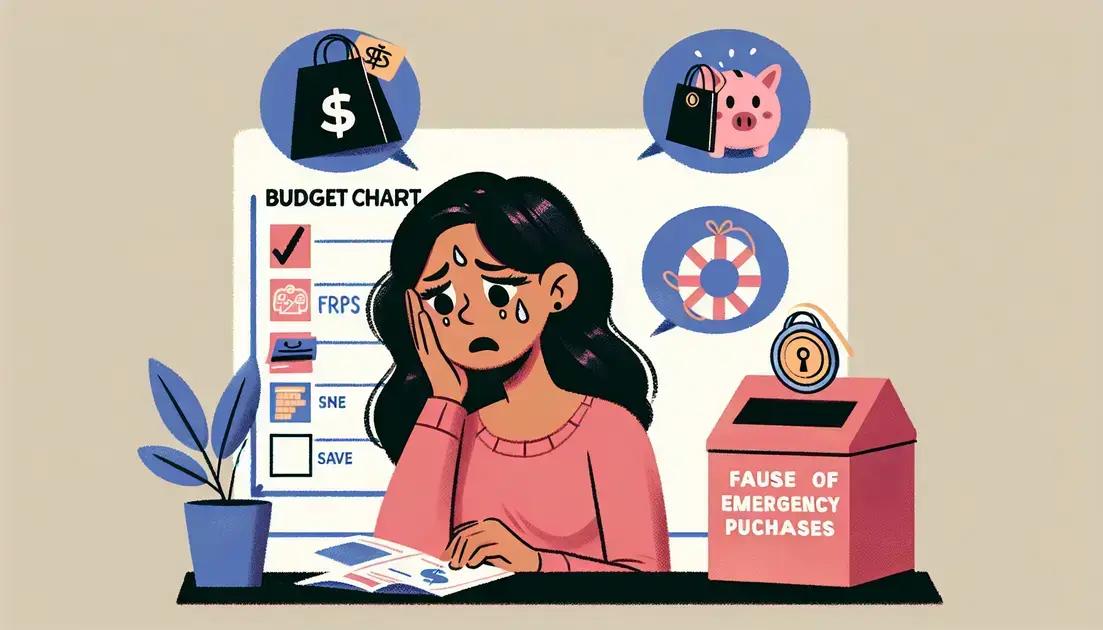Why Every Household Needs One for Financial Security
Advertising
Building an Emergency Fund is vital for financial security. It acts as a safety net during unforeseen events, ensuring peace of mind. In this article, we’ll explore the importance of having an emergency fund, how to build it effectively, and common mistakes people make. Let’s dive into the essential aspects of creating a robust financial buffer that can withstand life’s unpredictability.
What is an Emergency Fund and Why is it Crucial?
An emergency fund is a savings account specifically set aside for unexpected financial situations. These situations can include medical emergencies, job loss, or urgent home repairs. The main purpose of an emergency fund is to provide financial security and peace of mind when unpredictable life events occur.
Why is an Emergency Fund Important?
Having an emergency fund is crucial for several reasons. First, it helps prevent going into debt when unexpected costs arise. Without a financial buffer, many people rely on credit cards or loans, which can lead to a cycle of debt and financial stress.
Second, an emergency fund promotes better financial health. Knowing that you have savings available can relieve anxiety and allow for better decision-making. You are less likely to make hasty financial choices if you are aware that you can cover unexpected expenses without disrupting your budget.
How Much Should You Save?
Financial experts generally recommend saving at least three to six months’ worth of living expenses in your emergency fund. This amount can vary based on individual circumstances, such as your job stability and monthly expenses.
Where to Keep Your Emergency Fund?
It’s wise to keep your emergency fund in a separate, easily accessible savings account. Look for accounts that offer good interest rates but do not tie up your money for long periods. This will ensure that your funds are both secure and readily available when you need them.
How to Build Your Emergency Fund Effectively

Building your emergency fund effectively involves several important steps. Start by setting a clear savings goal. Determine how much you want to save based on your monthly expenses. A common rule of thumb is to aim for three to six months’ worth of living costs.
Create a Budget
To reach your savings goal, it’s essential to create a budget. List your income and expenses to see where you can cut back. Allocate a specific amount each month to your emergency fund. Even if it’s a small amount, consistency is key.
Open a Separate Savings Account
Keep your emergency fund in a separate savings account. This will help you avoid the temptation to spend it. Look for accounts that offer competitive interest rates, so your money can grow while you save.
Automate Your Savings
One of the easiest ways to build your emergency fund is to automate your savings. Set up automatic transfers from your checking account to your savings account each month. This method reduces the chances of forgetting to save and makes the process seamless.
Review and Adjust Regularly
Regularly review your savings goals and adjust as necessary. As your financial situation changes, you may want to increase your savings target. Additionally, keep track of your progress and celebrate small milestones to stay motivated.
Building an emergency fund takes time and discipline, but the financial security it provides is worth the effort. Stay committed to your plan, and soon you’ll have a solid safety net in place.
Emergency Fund: Recommended Amounts for Different Households
When determining how much to save in your emergency fund, it’s important to consider the unique needs of your household. Different households may have different financial situations and obligations. Here are some recommended amounts based on common household structures.
Single Individuals
If you live alone, it’s advisable to have at least three to six months’ worth of living expenses saved. This allows for adequate coverage in case of unexpected events like job loss or medical emergencies. For example, if your monthly expenses are $2,000, aim for an emergency fund between $6,000 and $12,000.
Couples Without Children
Couples without children generally are advised to save three to six months’ worth of joint living expenses. This ensures that both partners have financial protection. If your combined monthly expenses are $3,500, your goal should be an emergency fund of $10,500 to $21,000.
Families with Children
Families with children usually require a larger emergency fund. It’s recommended to have six months’ worth of living expenses, or more, depending on the number of children and additional costs. For instance, if your family’s expenses total $4,500 monthly, aim for an emergency fund between $27,000 and $54,000.
Single Parents
Single parents face unique challenges and should consider saving an amount that can cover six to twelve months of expenses. This gives the added security needed to manage parenting and unexpected costs. If your monthly expenses are $3,000, aim to have $18,000 to $36,000 set aside in your emergency fund.
Remember that these are general guidelines. It’s essential to evaluate your living situation and make adjustments to your emergency fund goals as life changes.
Common Mistakes to Avoid When Creating an Emergency Fund

Creating an emergency fund is a crucial step for financial security, but many people make common mistakes that can hinder their progress. Here are some pitfalls to avoid:
Neglecting to Set a Clear Goal
One major mistake is not setting a specific savings goal. Without a target amount, it can be challenging to stay motivated. Determine how much you want to save based on your monthly expenses; this will help you stay focused and accountable.
Dipping Into the Fund Too Often
Another common mistake is using the emergency fund for non-emergent expenses, such as dining out or vacations. It’s important to remember that this fund is for true emergencies only, like medical issues or unexpected job loss.
Not Automating Savings
Many people fail to automate their savings, making it easier to forget to contribute regularly. Set up an automatic transfer from your checking account to your savings account each month. Automating ensures continuous growth of your emergency fund.
Keeping the Fund in the Wrong Account
Storing your emergency fund in a checking account or a low-interest account can slow its growth. Instead, open a high-yield savings account specifically for your emergency fund. This allows your money to grow and be accessible when needed.
Ignoring the Importance of Regular Reviews
Lastly, failing to review your emergency fund regularly can lead to under-saving. Life circumstances and expenses change, so it’s important to assess your fund and adjust your savings goals as necessary. Review your fund at least twice a year to ensure it still meets your needs.
By avoiding these common mistakes, you can effectively build a solid emergency fund that provides financial security when you need it most.
In Summary: Building Your Emergency Fund is Essential
Creating an emergency fund is a pivotal step towards achieving financial security. It protects you from unexpected hardships like medical emergencies or job loss and provides peace of mind. By setting clear goals, automating your savings, and avoiding common mistakes, you can build a robust emergency fund tailored to your specific needs.
No matter your household situation, having an adequate emergency fund is vital. Whether you’re single, part of a couple, or a single parent, knowing how much to save can help you feel prepared for whatever life throws your way. Regularly review your financial situation and adjust your goals as necessary.
Ultimately, taking these steps ensures that you are better equipped to handle financial surprises, leading to better financial health and stability.




